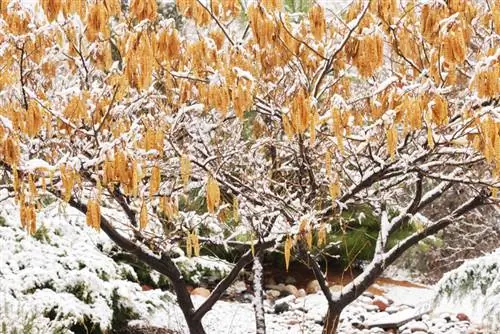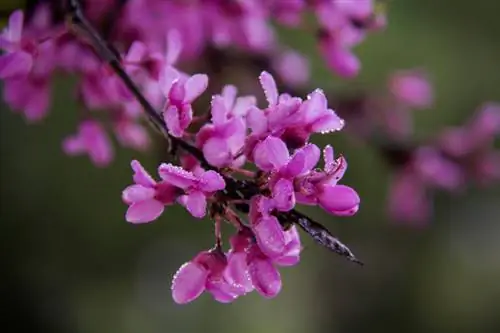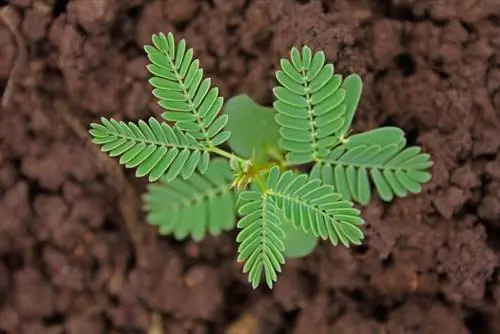- Author admin [email protected].
- Public 2023-12-16 16:46.
- Last modified 2025-01-23 11:21.
The silk tree, also known as the sleeping tree or silk acacia, comes from Asia and Australia. In his homeland, the temperatures in winter do not fall as much as in the Central European climate. The silk tree is therefore only partially hardy in our latitudes.

Is the silk tree hardy?
The silk tree is conditionally hardy and can tolerate temperatures down to -15 degrees for a short time. However, young plants require additional protection, such as layers of mulch and trunk wraps. Young trees should ideally overwinter frost-free in pots.
Up to what temperatures is the silk tree hardy?
The sleeping tree can tolerate temperatures down to minus 15 degrees for a short time - at least when it is a few years older. Younger silk trees that have just been planted outside must therefore be protected from frost or overwintered in a pot indoors.
So that the silk tree can become hardy enough to survive very cold temperatures, you must not plant it out too late in the year. You should keep young plants in the pot for the first few years anyway.
Choose a location where the sleeping tree is bright and protected from the wind. Places in front of walls or other trees are good, but you have to make sure there is enough distance.
Protect from frost outside in the first few years
Young silk trees need good frost protection in winter if they are planted outdoors. Cover the ground with a thick layer of mulch made from leaves, grass clippings or straw. This not only protects the soil from drying out, but also prevents the soil from freezing.
Wrap the trunk of the silk tree with garden fleece (€6.00 on Amazon), jute or brushwood to protect it from frost.
Don’t let it dry out even in winter
In the first few years, the roots of young silk trees do not reach deep enough into the soil to supply themselves with moisture. This also applies to freshly planted older silk acacias.
On frost-free days, you should water the silk tree occasionally if the winter is very dry.
Winter silk acacia grown in a pot frost-free
Since the young silk trees are much less hardy than older plants, it is best to care for them in a container in the first few years. You can overwinter this in a cool, frost-free place in winter.
Suitable places to spend the winter are
- bright garden houses
- unheated winter gardens
- Hallway window
- Entrance areas
The temperatures at the winter location should not fall below five degrees. They shouldn't be much warmer than ten degrees.
Get the silk tree into the house in good time
If you grow the sleeping tree in a pot on the terrace, bring it into the house in good time in autumn. At the latest when the temperatures have fallen to five to ten degrees, it is time to move.
After the winter, the silk tree in the pot is slowly brought back into a warmer environment and acclimated to the new location on an hourly basis.
Tip
The leaves of the silk tree contain no toxins. It is different with the fruiting bodies and seeds of the sleeping acacia, which are classified as poisonous. The sleeping tree is therefore not suitable for families with children or pets.






